Everything you need to know about lawn grass
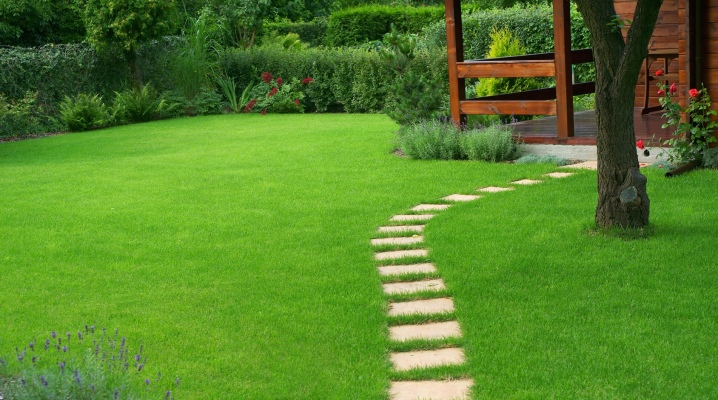
A well-groomed lawn is an integral part of thoughtful landscape design. That is why special attention should be paid to the selection of the mixture, planting it and caring for the lawn grass. Today we will tell you about the varieties of lawn crops and give recommendations on its agricultural technology.
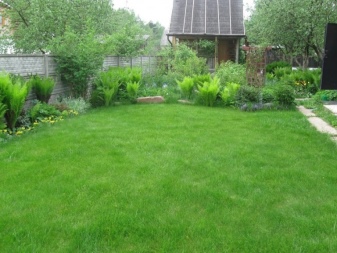
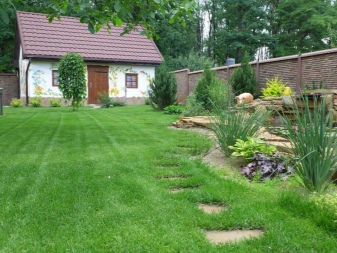
Peculiarities
If we compare landscape with fine art, then, first of all, a lawn can be compared with a canvas, against which all other crops are planted and garden compositions are created. It solves a number of important tasks:
- ennobles the territory of personal plots, parks and squares;
- creates an aesthetic covering of a sports or children's playground;
- masks unattractive areas of the local area;
- strengthens slopes and hilly soils.
Lawn grass increases the decorative value of the site, protects the soil from erosion and restores fertility. And special grass mixtures for sports lawns make it possible to form a surface resistant to wear.

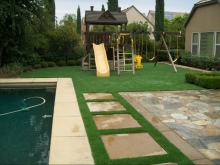
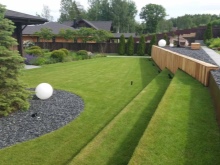
There are strict requirements for lawn grass:
- compliance with the intended use;
- aesthetic appearance throughout the year;
- ensuring high fixation of the leaf on the stem;
- fast regeneration;
- developed and branched root system;
- adaptability to frequent mowing;
- resistance to trampling;
- loyalty to moisture, drought and other unfavorable external factors;
- preventing weed growth.
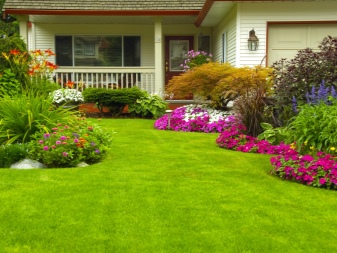
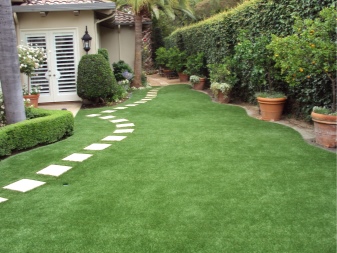
And, of course, lawn grass should remain green for most of the year, and in warm regions all year round. The very first lawns appeared in the 16th century, they became a kind of transitional element between rural gardening and urban landscape. Already in the 17th century, they were planted to decorate city squares.
Modern lawns come in a wide variety of solutions.
- Sports - high resistance to trampling and the ability to quickly recover are important for him.
- Portrait - a classic lawn with small alleys arranged in the midst of green plants. It has a high decorative effect, however, it is not intended for intensive movement on the grass.
- Ordinary garden - combines good decorative characteristics with resistance to trampling.
- Shady - such a lawn is more like a lawn in the forest.
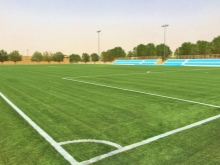
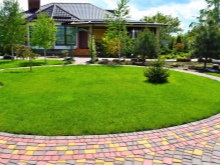

Overview of the main types
In total, about 40 grasses with different germination parameters and their own vegetation characteristics are used in the arrangement of lawns. Most often, the mixture includes plants of the cereal family. Let's dwell on the rating of the most common ones.
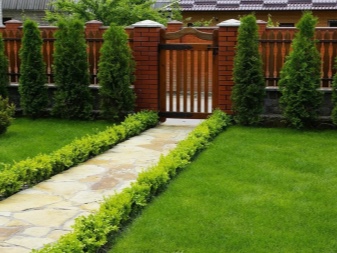
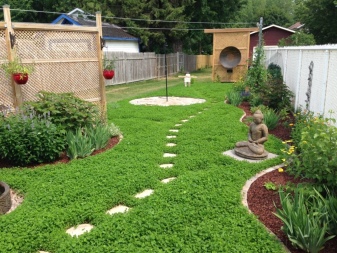
Meadow bluegrass
The most common culture in the arrangement of sports and lawns. Its relevance is due to the fact that bluegrass forms a dense, wear-resistant surface. The plant has only one drawback - a low germination rate, the first shoots appear only after 3-4 weeks. Because of this, the area planted with bluegrass becomes overgrown with weeds. That is why it is usually planted along with other herbs, most often with ryegrass.
Bluegrass is distinguished by tough, wide leaf blades and a powerful root system. The plant is resistant to trampling, it can successfully grow and develop in open sunny areas and withstand short-term drought. Easily tolerates winter frosts.
Prefers neutral soils, needs fertilization.

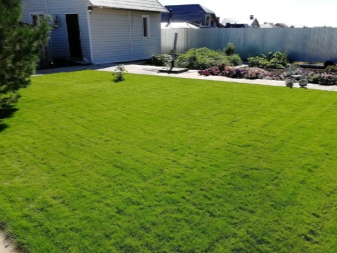
Common bluegrass
Another unpretentious variety of bluegrass, which stands out effectively against the background of a dark suburban cover, in the composition of grass mixtures makes the design of the site more aesthetic. The downside is that common bluegrass is not durable, so after 5 years you will have to plant this crop again.
To decorate a lawn in a shady place, it is better to give preference to oak grass bluegrass. It is planted between buildings, as well as in other areas poorly lit by the sun. The disadvantage of the plant is that it has an underdeveloped root system, therefore it is not recommended to crumple it and mow it often.
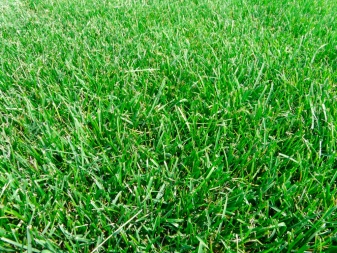
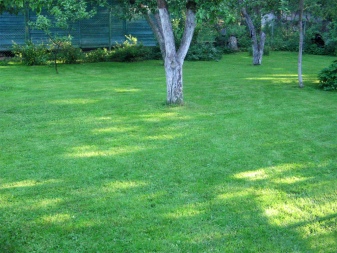
Timothy grass
Cereal perennial plant, grows up to 50-100 cm. It has creeping shortened roots. The culture has become widespread in pastures and hayfields; it is often included in cheap grass mixtures.
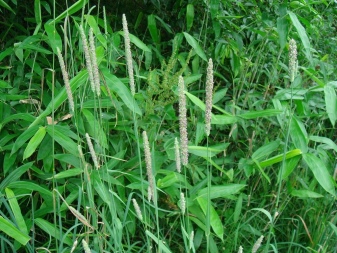
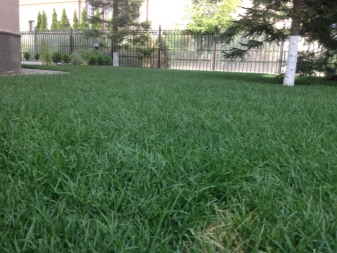
Small-leaved timothy
The grass is capable of growing in damp, cool areas, making the grass recognized as one of the most hardy lawn crops. Its sowing is relevant in those areas where the surface of the earth is flooded in winter.
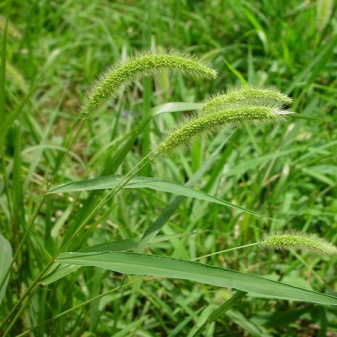
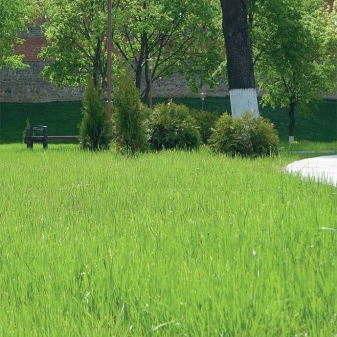
Perennial ryegrass
One of the most common crops in gardening, it quickly grows up to 50-60 cm. It prefers a mild climate and low-lying areas, however, it can withstand short-term frosts up to -15 degrees without being covered with snow. Can withstand lower temperatures under snow. It grows and develops rapidly in any wet land. Resistant to trampling, characterized by a high rate of regrowth of new shoots, which is why grass is often planted for arranging sports lawns.
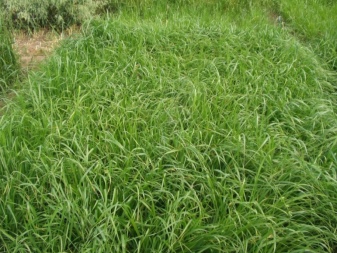
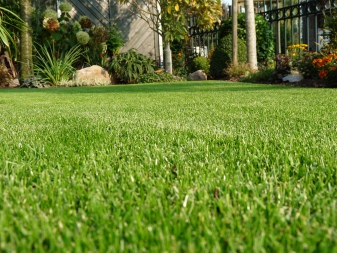
Red fescue
The culture has many subspecies; rhizome varieties are mainly used to form lawns. It is characterized by high endurance. It can grow even on poor, infertile soils and grow with sparse watering. Thanks to these features, red fescue has become an indispensable element of any grass mixtures.
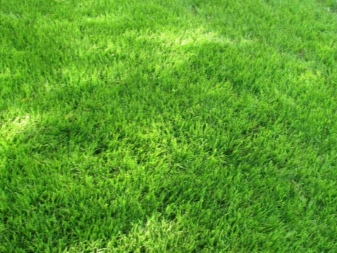
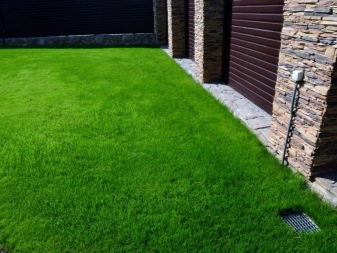
Reed fescue
It is considered one of the most heat- and winter-hardy herbaceous plants. It forms powerful perennial shrubs with developed roots and partially underground shoots. Due to this, the plant provides itself with moisture and minerals even in dry weather and lack of watering, when other crops stop growing. This culture retains its bright green hue even in the heat of summer. The culture takes root quickly, although slightly slower than ryegrass.
Shows high resistance to diseases.
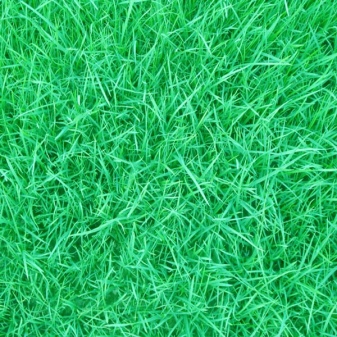

Sheep fescue
Grassroots culture characterized by resistance to short-term drought. When the aboveground and root parts dry out, it does not die, but falls into a dormant state. When the parameters of moisture content are normalized, the soil comes out of it. It grows slowly, wakes up earlier than other herbs in the spring.
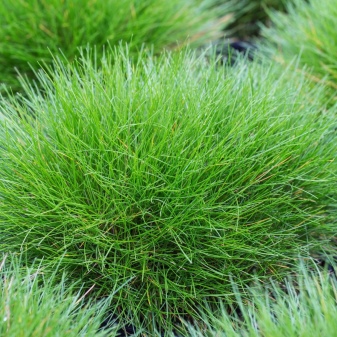
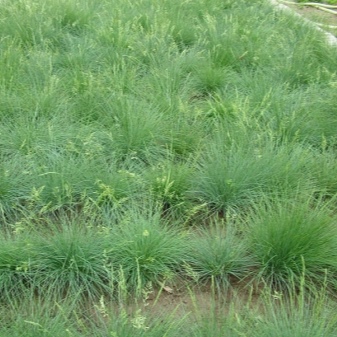
Pole grass
Such grass spreads quite aggressively throughout the territory. The plant releases creeping roots and thus prevents weeds. The rhizome is shallow, so the grass does not tolerate even a short-term drought and requires systematic watering.
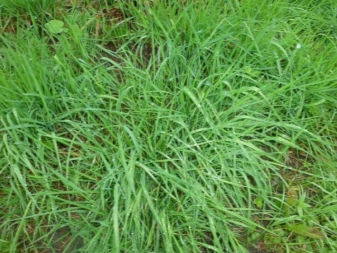
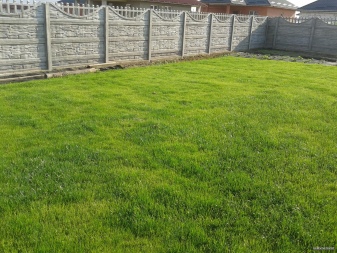
Bent bent
The plant forms strong bushes with shortened underground and aboveground shoots. A perennial with thin filaments grows well on acidic and poorly fertile soils, it can also be grown in dark places and on hilly hills. Forms a uniform and dense grass stand, responds well to low cut. Pollevitsa became widespread for decorating decorative lawns, as well as golf courses.
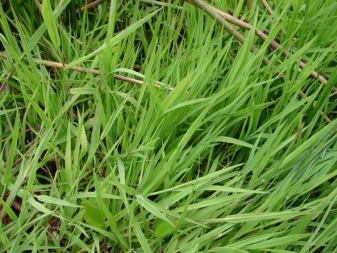

Cocksfoot
The culture is undemanding to the soil, but prefers loamy and clayey lands. It grows poorly on sandstones. Drought tolerant, however, prolonged lack of watering may not tolerate.Dies from excessive moisture.
It is characterized by poor winter hardiness, poorly withstands early autumn and late spring frosts. The lawn reaches its full development in the second or third year, as part of the grass stand it retains its appearance for up to 7-8 years. It forms a sod cover on the surface, most often it is planted as a monoculture. In the course of life, it releases toxic substances into the soil that inhibit the growth of other plants - this leads to their loss from the general grass stand.

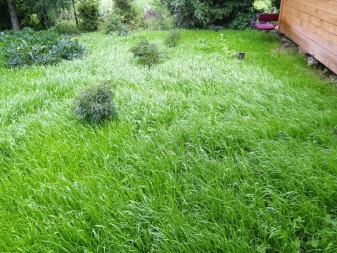
Festullolium
Hybrid plant obtained by crossing annual ryegrass and voles. It is the main sod forming agent in the construction of slope pavements on highways.
It grows and develops well in lowland areas with a humidity level of 60-70% of the total moisture capacity.
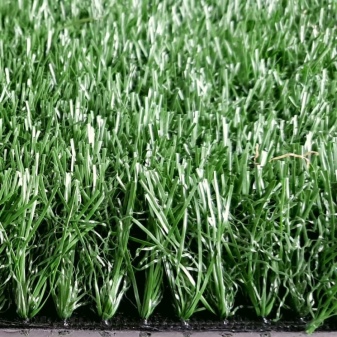
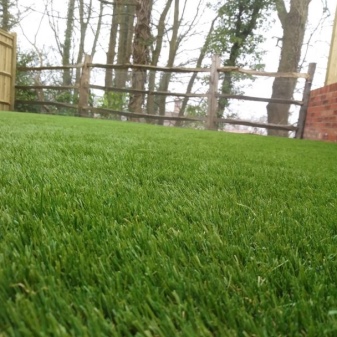
Clover white
Clover is often used in mixtures with thin grasses, such a lawn turns out to be healthy and decorative even without the use of nitrogen fertilizers. Clover grows quickly, is resistant to adverse external conditions, and can withstand trampling. However, this plant has a drawback - after mowing it looks untidy, however, after 4-5 days, when the green mass grows, the plant will return its decorative effect. The only exception is the dwarf variety, which is gaining popularity in gardening. In addition, flowering clover is a honey plant, so it attracts bees, wasps and other stinging insects.
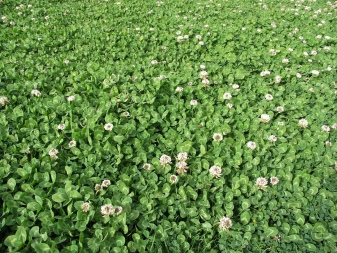

Quantity calculation
Seeds must be sown in accordance with regulatory guidelines, otherwise the lawn will not look as aesthetically pleasing as we would like. If there are fewer seeds than necessary, the cover will turn out to be heterogeneous, "tufted" and will not give a dense turf. This means that it will be poorly resistant to weeds and trampling.
If you take a little more seeds than recommended, then the plants will suffer from a lack of nutrients, and this will lead to the development of diseases. The seeding rate depends on the soil and the type of grass. On average, 40-50 g of seed should be distributed for each square meter of land. This parameter can be adjusted according to the type of soil. So, on light soils of medium density, only 30-40 g / m2 are needed, and on heavy soils, the consumption is increased to 60 g / m2.
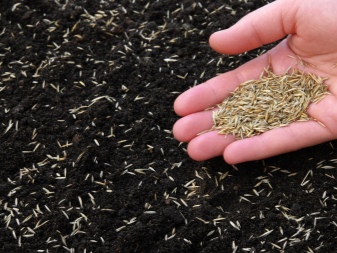

How does it grow and multiply?
Most lawn crops are propagated by both seed and division. If you want to grow green cover as quickly as possible, then you should buy ryegrass or fescue. They grow rather quickly, after 1.5-2 months the stems close with each other, forming an elegant lawn. However, these crops do not grow in one place for more than 3-5 years, therefore, after a while, new plants will have to be planted.
Other grasses, such as bluegrass, form a beautiful lush carpet but grow slowly. That is why slow and fast growing crops are combined in the composition of the lawn mixture. In the first couple of years, such a lawn is formed due to the rapidly growing fescue and ryegrass, after 3-5 years their stems begin to die off, but by that time the site is already occupied by slowly growing crops.

Thus, the lawn remains attractive throughout the entire period of grass development. You can speed up the overgrowing of the site by cutting the plants.
When cutting off the top, increased growth of lateral shoots is stimulated - this helps to eliminate "bald spots" in the territory.
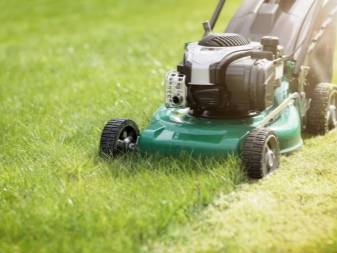
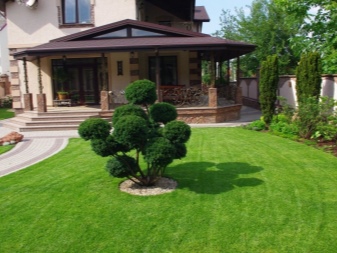
What is the best herb to choose?
The lawn mixture is sold in packs of 3 to 20 kg. The seed mix should be selected with important criteria in mind.
- Purpose of the site - decide how you plan to use the site - for grazing farm animals, stabilizing the soil on the slopes, as a decorative or sports surface.
- Service level - it can be regular or episodic.
- The volume and quality of water required for irrigation.
- pH, drainage soil fertility level.
- The amount of sunlight and shade that the plant carpet will receive.
- Growth rate, ability to regenerate grass carpet.
- Climatic features - some herbs tolerate summer heat and long winter frosts well, while for others they are destructive.
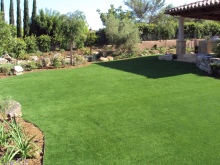
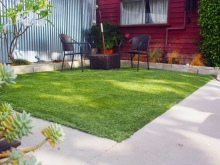

For all types of lawns, it is important that the grass is adapted to the natural and climatic characteristics of the region. Accordingly, some grass mixtures are suitable for the northern regions, others for the southern ones. For example, in Siberia, it is better to use fescue, bluegrass and ryegrass. These herbs are optimal for frosty winters and cool summers with high humidity. In the northwest, it is better to grow fescue and ryegrass, they are optimal for variable humidity in the warm season and for prolonged frosts in winter. In the transitional climatic zone, it is better to give preference to fescue, bluegrass and zoisia.
Depending on the purpose of the lawn, you can plant different seed mixtures. The parterre lawn looks most impressive. However, he needs thorough care. To create it, bluegrass fescue is mainly used, as well as bent grass.

An ordinary garden lawn in the country requires occasional maintenance. This herb is resistant to short-term frost, moisture, disease and garden pests. Typically, the mixture includes all types of fescue, ryegrass, willow bent or escaping.
For sports fields, trampling resistance comes to the fore, because the grass mixtures include intense loads. Here, the choice falls on ryegrass and bent grass; for children's zones, a combination of ryegrass and timothy is optimal.
When sowing a meadow lawn, legumes and knotweed can be included in the grass mixture, the Moorish carpet is decorated with the addition of flower seeds - cornflower, bell, poppies, chamomiles and flax.
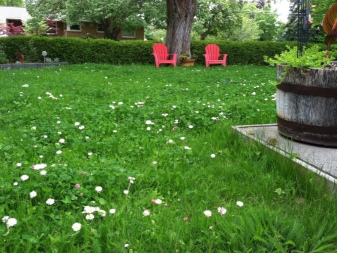

It is important to familiarize yourself with the characteristics of the mixture in advance, they can be of several types.
- Fast - include fast growing herbs. Relevant when restoring trampled lawn coverings. The main ingredients are timothy, fescue and bluegrass. The disadvantage of such crops is that they are short-lived and live no more than 4-5 years.
- Shady - these compositions are planted in poorly lit areas, their main components are ryegrass, fescue and bluegrass.
- Solar - such herbs, on the contrary, love the sun and prefer to be under its rays all day. These herbs include fescue, alfalfa, and bluegrass.
- Universal - grow and develop rapidly. Provides a lush green cover in the widest range of growing conditions. The bent is usually taken as a basis, which easily tolerates heat, and prolonged drought, and lingering cold weather.
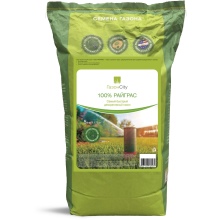


Important: be sure to check the expiration date and storage period of the grass mixture, since the seed material has a limited germination period.
When and how to sow correctly?
There are several ways to sow a lawn with your own hands.
- With the use of a seeder. First, you should pour the required amount of seeds into the seeder and walk along the prepared land plot. To facilitate the sowing work, it is better to mark the area into squares and sow on them, taking into account the rate of seed consumption.
- By hand. This method is the simplest. Sowing in this case is carried out first along and then across the area allocated for the lawn. In this technique, seeds are mixed with sand in a ratio of 1 to 3 and evenly scattered over the prepared soil.
- Using a tin can. The seeder can be replaced with a small tin can. Holes are made in it, the diameter of which will be slightly larger than the size of the seeds. Sowing is carried out by analogy with the manual method, with the addition of river sand and movement along the site along and across.
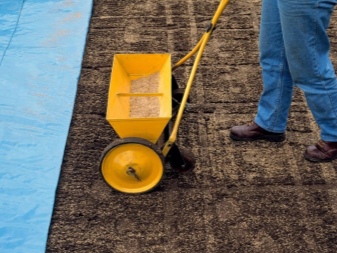
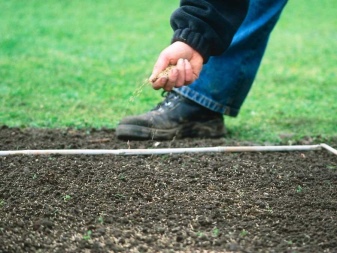
Sowing lawn grass can be done at any time during the growing season, that is, from the end of April to September. The cycle before planting rooting takes 4-5 weeks - this must be borne in mind when planning autumn sowing in order to be in time before the onset of the first frost.
Spring is considered the optimal time. Planting is carried out after the average daily temperature is set at around + 12-15 degrees. The gentle sun ensures high germination and excludes the death of young shoots due to the heat.
However, during this period, weeds also actively germinate - special attention should be paid to their weeding.
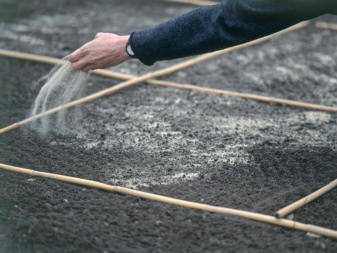
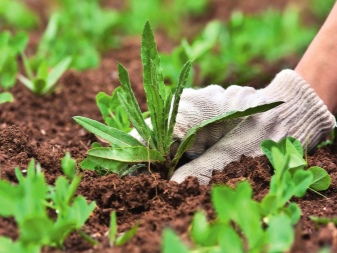
Summer planting attracts with the possibility of complete cleaning of the area from weeds before planting grass. It is necessary to carry out work only in the early morning or after 18 hours, when the sun will not be very hot. During this period, it is important not to allow the topsoil to dry out.
Autumn planting is carried out 1.5-2 months before the onset of frost, while the temperature is high. Before sowing, the area must be cleared of the remnants of old grass, weeds; composting is an indispensable condition.
When planting grass at any time of the year, you need to adhere to the following stages of work. Before sowing, you need to remove all debris from the site, uproot the stumps and remove the roots of weeds. Then the site is dug to the depth of the shovel bayonet, all large lumps are broken and leveled with a rake. The seeds are sown in one of the most convenient ways, then rake them again and watered. The humidification system must be drip, otherwise the seeds are brought to the surface.

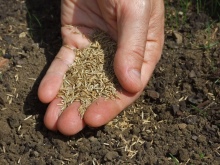
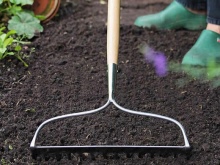
Care
Lawn grass care includes several basic types of work.
- Watering. Although many lawn grasses can tolerate drought, the lawn still needs regular irrigation to keep the colors bright.
- Fertilization. In order for the lawn to delight you with its appearance for a long time, it needs periodic feeding. At least twice a year, you need to add micronutrients - in the spring crops need nitrogenous compounds, and in the fall - phosphorus-potassium. When grown on sparse soils, from time to time, you can additionally water the grass with complex compounds.
- Aeration. To improve the flow of air to the roots, it is necessary to pierce the ground with a garden fork every 10-15 days.
- Weed removal. Please note that in the first years after planting there will be a lot of weeds. They grow from seeds left in the ground, carried by birds and pets. Weeds absorb a lot of water and nutrients from the ground, this impairs the nutrition of cultivated grasses and stops their growth.
- A haircut. As it grows, the lawn grass must be mowed. It is optimal that its length does not exceed 8 mm.
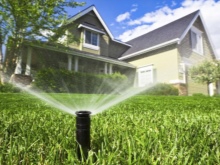


Tip: You can use cut grass to mulch your strawberries.
Advice
Many gardeners are wondering - what is better to grow in a summer cottage, a grass mixture or a monogazon. Monoculture has its advantages - the shade and structure of the lawn looks uniform. However, any unfavorable factors will worsen his condition.
Most often, a monogazon is planted in areas with professional maintenance and increased intensity of use. (on soccer fields, golf courses, tennis courts). The grass mixture does not have a uniform appearance, but it is more resistant to unfavorable environmental factors. This is because conditions that are unacceptable for one herb are easily tolerated by other plants. This option is optimal for decorating lawns "with your own hands", since it will be difficult for a non-professional to assess all the features of the soil and climate, as well as to competently perform care on problem areas.
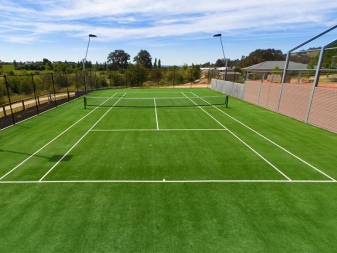
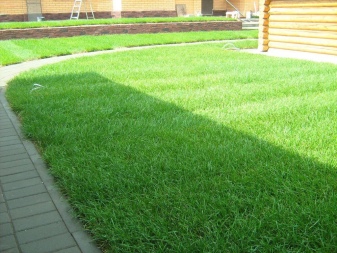
Review overview
Lawns are rapidly conquering lawns and personal plots of private houses. They look attractive and at the same time leave room for outdoor activities. However, growing such a lawn is by no means simple. First of all, you need to study the features of different herbs and choose the right mixture of herbs.
According to customer reviews, budget seed materials are growing rapidly and are pleasing to the eye at first. But after a season or two, unaesthetic bald spots appear on the site - you have to overseed. This happens if short-lived or even annual lawn grasses are included in the mixture.
Lawn care also deserves special attention. If you do not follow the basic requirements, then very soon the lawn will take the form of an overgrown forest glade. In the absence of work experience, it is best to give preference to rolled lawns supplied by agricultural firms.
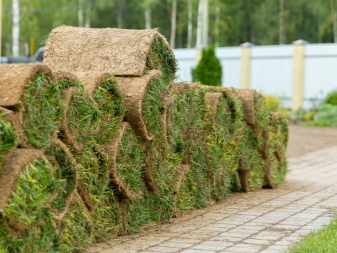

For information on how to sow lawn grass with your own hands, see the next video.



































































The comment was sent successfully.